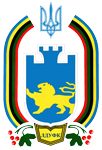Please use this identifier to cite or link to this item:
https://repository.ldufk.edu.ua/handle/34606048/35081Full metadata record
| DC Field | Value | Language |
|---|---|---|
| dc.contributor.author | Korytko, Zoryana | - |
| dc.contributor.author | Maistruk, Mykola | - |
| dc.contributor.author | Dutchak, Yuriy | - |
| dc.contributor.author | Pavlyuk, Oksana | - |
| dc.contributor.author | Chopyk, Tetyana | - |
| dc.contributor.author | Haiduk, Olena | - |
| dc.contributor.author | Hreida, Nataliia | - |
| dc.contributor.author | Stelmashchuk, Olena | - |
| dc.contributor.author | Коритко, Зоряна | - |
| dc.date.accessioned | 2023-12-06T10:10:25Z | - |
| dc.date.available | 2023-12-06T10:10:25Z | - |
| dc.date.issued | 2023-11-30 | - |
| dc.identifier.citation | Utilizing hemogram indicators and coagulation homeostasis as key markers for precision dosing of physical exertion / Zoryana Korytko, Mykola Maistruk, Yuriy Dutchak, Oksana Pavlyuk, Tetyana Chopyk, Olena Haiduk, Nataliia Hreida, Olena Stelmashchuk // Journal of Physical Education and Sport. – 2023. – Vol. 23, is. 11. – P. 2931–2939. DOI:10.7752/jpes.2023.11334 (Scopus) | uk_UA |
| dc.identifier.uri | https://repository.ldufk.edu.ua/handle/34606048/35081 | - |
| dc.description.abstract | Problem statement. To ensure the accurate prescription of physical exertion in sports, physical education, and rehabilitation, it is crucial to employ criteria of adequacythat signify the compatibility of physical exertion with the body's functional capabilities. Objective. This study aimed to establish criteria for assessing the adequacy of physical activity, utilizing hemogram indicators and coagulation homeostasis parameters in the context of extreme physical activity. Materials and methods. The research involved two groups of 46 male sprinters aged 18–20 years. The first group (GI) comprised highly skilled athletes (Category I - MS, n = 21), while the second group (GII) included less skilled athletes (Categories II-III, n = 25). Additionally, a control group (CG) comprised healthy volunteers of the corresponding age and sex who were not engaged in sports (n = 12).Changes ofthe complete blood count and separate indicators of coagulation homeostasis at rest, under conditions of maximum physical load "to failure" and during recovery were studied. The results. It was established that some indicators of hemogram and indicators of coagulation homeostasis changed differently in low- and highskilledathletes during extreme physical load and during recovery. Athletes of different qualifications differed in the dynamics of the following hemogram indicators (markers): hemoglobin concentration, red blood cell count,erythrocyte sedimentation rate, white blood cell count total, number of segmented neutrophils, leukocyte intoxication index. These parameters were higher in low- than in high-skilled athletes. The low-skilled athletes also had greater changes of indicators that characterize the tendency to hypercoagulation. Close correlations between these marker indicators and parameters of coagulation homeostasis were also established. Discussion. The marker indicators changed more in low- than in high-skilled athletes, because these athleteshad less developed mechanisms of regulation of adaptive and compensatory states in conditions of physical exertion "to failure". An increase in marker indicators signaled unfavorable changes in the body of low-skilled athletes when physically overworked. This was confirmed by an increase in the tendency to hypercoagulation with its known pathogenetic effect on the body. Conclusions. The obtained data confirm that the hemogram indicators and the indicators of coagulation homeostasis can be markers of the functional state for assessing adaptive reactions of athletes to intensive physical work. They can also be used as markers when dosing exercises in physical education and rehabilitation. Мета. Це дослідження мало на меті встановити критерії оцінки адекватності фізичної активності з використанням показників гемограми та показників коагуляційного гомеостазу в контексті екстремальні фізичні навантаження. | uk_UA |
| dc.language.iso | en | uk_UA |
| dc.relation.ispartofseries | Наукові праці професорсько-викладацького складу ЛДУФК імені Івана Боберського в базах даних Scopus та WoS; | - |
| dc.subject | hemogram | uk_UA |
| dc.subject | coagulation | uk_UA |
| dc.subject | marker | uk_UA |
| dc.subject | extreme physical exertion | uk_UA |
| dc.subject | adaptation | uk_UA |
| dc.subject | runners-athletes | uk_UA |
| dc.subject | гемограма | uk_UA |
| dc.subject | коагуляція | uk_UA |
| dc.subject | екстремальне фізичне навантаження | uk_UA |
| dc.subject | маркер | uk_UA |
| dc.subject | адаптація | uk_UA |
| dc.subject | бігуни-легкоатлети | uk_UA |
| dc.title | Utilizing hemogram indicators and coagulation homeostasis as key markers for precision dosing of physical exertion | uk_UA |
| dc.title.alternative | Використання показників гемограми та гомеостазу коагуляції як ключових маркерів для точного дозування фізичного навантаження | uk_UA |
| dc.type | Article | uk_UA |
| Appears in Collections: | Наукові праці професорсько-викладацького складу ЛДУФК в базах даних Scopus, WoS, Tomson Reuters | |
Files in This Item:
| File | Description | Size | Format | |
|---|---|---|---|---|
| Art334.pdf | 254.73 kB | Adobe PDF | View/Open |
Items in DSpace are protected by copyright, with all rights reserved, unless otherwise indicated.
